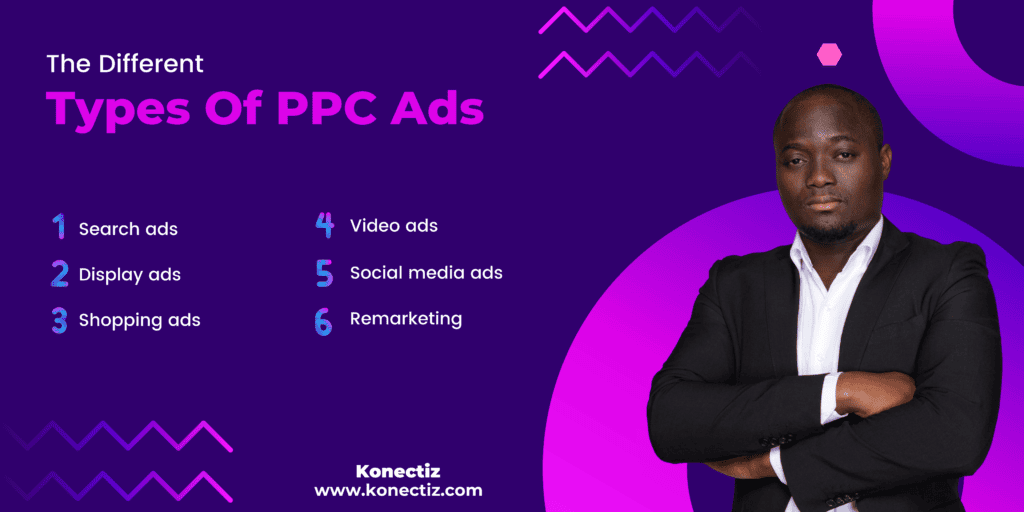Introduction: Pay Per Click (PPC), an online advertising model
Pay Per Click (PPC) is a form of digital marketing that has become increasingly popular in recent years. It allows advertisers to pay a fee every time their advertisement is clicked, which makes it an efficient and cost-effective way to reach their target audience. With the help of Pay Per Click, businesses can track the success of their campaigns and adjust their strategies accordingly.
Additionally, Pay Per Click campaigns can be tailored to target specific audiences, allowing for more targeted and effective advertising. As such, Pay Per Click is quickly becoming one of the most efficient ways for businesses to reach out to potential customers and increase sales.
What is Pay Per Click?
Pay Per Click advertising, also known as Cost-Per-Click (CPC) advertising allows businesses to bid on keywords related to their business or industry. When someone searches for those keywords on a search engine like Google or Bing, the businesses’ ads are displayed on the SERP. If someone clicks on the ad, the business is charged a fee.
Pay Per Click advertising can be a highly effective and cost-efficient way to drive traffic and leads to your website. With platforms such as Google Ads and Bing Ads, advertisers are able to create Pay Per Click (PPC) campaigns easily, specifying the budget for their campaigns and the maximum amount they are willing to spend per click.
These platforms also provide comprehensive reporting tools which give insights into the performance of their campaigns, allowing advertisers to make informed decisions on how to optimize their campaigns for better results.
How does Pay Per Click work?
Pay per click (PPC) advertising is a digital marketing strategy that allows businesses to place ads on search engines or other websites and only pay when a user clicks on their ad. This form of advertising is highly effective because it allows businesses to reach a targeted audience that is actively searching for their products or services.
Pay per click works by allowing advertisers to bid on specific keywords or phrases that are relevant to their target audience. When a user types in one of these keywords or phrases, the search engine or website will display relevant ads based on the advertiser’s bid and relevance score. The relevance score takes into account factors such as the quality and relevance of the ad, as well as the landing page experience for users who click on the ad.
Pay per click advertising can be a highly effective and cost-efficient way to drive traffic and leads to your website. With platforms such as Google Ads and Bing Ads, advertisers can create Pay Per Click (PPC) campaigns easily, specifying the budget for their campaigns and the maximum amount they are willing to spend per click.
Using content marketing in PPC can also help businesses build brand awareness and loyalty by providing useful information that resonates with their target market. By combining creative content with effective targeting tactics, businesses can create successful PPC campaigns that generate leads while also enhancing their brand image.
These platforms also provide comprehensive reporting tools which give insights into the performance of their campaigns, allowing advertisers to make informed decisions on how to optimize their campaigns for better results. advertising works by allowing businesses to display their ads on search engine results on pages and other websites. Advertisers bid on keywords related to their business or industry, and their ads are displayed when a search matches their targeted keywords.
Pay per click campaigns can be set up quickly and easily and can be tailored to meet the needs of any business. Advertisers can choose from a variety of targeting options, including geographic location, time of day, language, device type, and more. This allows businesses to reach their ideal audience and maximize the effectiveness of their ads.
One of the key benefits of pay per click advertising is its flexibility. Advertisers can set daily or monthly budgets for their campaigns, and the ad can adjust their bids and targeting criteria in real-time sed on the performance of their ads. For example, if an advertiser notices that their ads are not performing well in a certain geographic location, they can adjust their targeting to exclude that area and focus on more profitable regions. This level of flexibility allows businesses to optimize their campaigns and get the most out of their advertising budget.
When someone searches for those keywords on a search engine like Google or Bing, the businesses’ ads are displayed on the SERP. If someone clicks on the ad, the business is charged a fee. This fee, the cost per click (CPC), varies depending on factors such as the competition for the keywords and the quality of the ad. Advertisers can specify the maximum amount they are willing to pay per click, which helps to control their costs.
What is a good Cost Per Click?
The determination of a good cost per click (CPC) in Pay per click can be difficult since it varies based on various factors. CPC is the amount that an advertiser pays each time a user clicks on their ad. A good CPC will be influenced by factors such as the industry, competition, and campaign goals.
One way to determine a good CPC in pay per click is to look at industry benchmarks. Each industry will have its own average CPC based on factors such as competition, demand, and the types of keywords being targeted. For example, highly competitive industries like finance and legal services tend to have higher CPCs, while less competitive industries like food and beverage have lower CPCs. Advertisers can use these benchmarks as a starting point when setting their own CPCs.
Another factor to consider when determining a good CPC in pay per click is the specific goals of the advertising campaign. For example, if the goal of the campaign is to drive conversions or sales, then a higher CPC may be justified if it leads to a higher conversion rate. On the other hand, if the goal is simply to drive traffic to a website, then a lower CPC may be more appropriate.
Ultimately, a good CPC in pay per click will depend on the specific circumstances of the advertising campaign. For example, if an advertiser has a limited budget, they may need to set a lower CPC to ensure they can reach their target audience without overspending. However, if an advertiser has a larger budget and is focused on driving conversions, they may be willing to set a higher CPC to ensure they reach a more qualified audience.
In general in pay per click, a good CPC is one that allows the advertiser to achieve their desired results while staying within their budget. A well-optimized campaign that targets the right audience with the right message can help keep CPCs low while still driving results. Advertisers should continually monitor their CPCs and adjust their bidding strategy as needed to ensure they are getting the most out of their advertising budget.
Email marketing is also an effective way to reach out to potential customers and generate leads. Pay-per-click (PPC) is a model of online advertising that allows businesses to pay for each click on their ads. Combining email marketing with PPC campaigns can be a powerful tool for boosting conversions and sales.
PPC campaigns allow businesses to target specific audiences and track the performance of their ads more closely. With email marketing, businesses can send personalized messages that are tailored to their target audience, helping them build relationships with potential customers. By combining these two strategies, businesses can create highly successful campaigns that will drive traffic and leads to their website or store.
Benefits of a Pay Per Click strategy

1. Cost-effective
With Pay Per Click advertising, you only pay when someone clicks on your ad. This means that you’re not paying for impressions or views that don’t result in clicks or conversions. Additionally, you can set a budget for your campaigns, allowing you to control your spending and ensure that you stay within your budget. This level of cost-effectiveness makes PPC advertising accessible to businesses of all sizes, from small startups to large corporations.
2. Highly targeted
By utilizing Pay Per Click advertising, businesses can precisely target their ads to specific audiences based on factors such as language, geographic location, and device type. This capability allows businesses to increase the chances of converting clicks into customers, as their ads are shown only to people who are likely to be interested in their products or services.
3. Quick results
Unlike other forms of advertising, such as search engine optimization (SEO), which can take months to see results, Pay Per Click advertising can drive immediate traffic to your website. This can be particularly beneficial for businesses that are launching a new product or service, or that need to generate leads quickly. By generating quick results, businesses can stay agile and responsive in their marketing efforts.
4. Measurable
One of the biggest advantages of Pay Per Click advertising is the ability to track and measure the performance of your campaigns. This means that you can see exactly how many clicks, impressions, and conversions your ads are generating. You can also see which ads and keywords are performing best, allowing you to optimize your campaigns for better results. This level of insight enables businesses to make data-driven decisions and adjust their digital marketing strategy as needed.
5. Flexibility
Pay Per Click advertising is highly flexible, allowing businesses to adjust their strategy as needed. You can change your targeting criteria, adjust your bids, and refine your messaging to improve the performance of your campaigns. This flexibility is particularly useful when businesses need to respond quickly to changes in their industry, such as new product releases or competitive threats.
What are the different types of PPC Ads?

There are several different types of pay per click (PPC) ads that businesses can use to promote their products or services online. Here are some of the most common types of PPC ads:
1. Search ads
Search ads are the most common type of Pay Per Click ad and appear at the top and bottom of search engine results pages (SERPs). These ads are triggered by specific keywords and are highly targeted, making them a great way to reach users who are actively searching for your products or services..
2. Display ads
Display ads, which can feature images, videos, or other multimedia elements, are visual advertisements that appear on various websites across the internet. They are created to capture users’ attention while they browse the web and can be highly effective in driving clicks and conversions. By leveraging user data such as demographics, interests, and behavior, businesses can target their display ads to reach the most relevant audience, ultimately leading to a higher ROI for their pay per click campaigns.
3. Shopping ads
Businesses can use Shopping ads, a form of Pay Per Click ad, to showcase their products within search result pages. These ads display product images, prices, and descriptions, making them an excellent tool for e-commerce businesses to increase their sales.
4. Video ads
Video ads are a type of Pay Per Click ad that appear on platforms such as YouTube and other video-sharing websites. These ads can be highly targeted based on user demographics and interests and can include a variety of video formats, including skippable and non-skippable ads.
5. Social media ads
Social media ads are a type of Pay Per Click ad that appears on social media platforms such as Facebook, Twitter, and Instagram. These ads can be highly targeted based on user demographics, interests, and behaviour and can include a variety of ad formats, including image ads, video ads, and carousel ads.
Social media marketing allows businesses to reach a wide range of people with just one click. It also offers more precise targeting options than traditional PPC campaigns, as well as the ability to track results in real time. This makes it easier for businesses to optimize their campaigns and get better ROI on their investment.
6. Remarketing
Pay Per Click (PPC) remarketing ads are designed to target users who have previously interacted with your brand online or visited your website. This type of advertising can be a powerful tool for businesses, as it helps increase brand recognition and drive conversions from users who have already shown an interest in your products or services.
Tips on choosing the right type of Pay Per Click ad for your Business
Choosing the right type of pay per click (PPC) ad for your business is crucial to the success of your online advertising campaign. Here are some tips to help you choose the right type of PPC ad for your business:
1. Consider your business goals
The first step in choosing the right type of pay per click ad is to consider your business goals. Are you looking to increase brand awareness, drive website traffic, or boost sales? Different types of pay per click ads are more effective at achieving different goals, so it’s important to select the right type of ad based on your specific objectives.
2. Know your target audience
Understanding your target audience is critical to selecting the right type of pay per click ad. Consider factors such as age, gender, location, and interests when selecting your ad type to ensure you are reaching the right audience with the right message.
3. Analyze your competition
In the world of pay per click advertising, analyzing your competition can be a valuable tactic for gaining a competitive edge. By examining the types of ads your competitors are running and analyzing their performance, you can gain valuable insights into what works well in your industry. This can help you identify any gaps or opportunities to differentiate yourself from your competition and stand out in the market.
By leveraging this information, you can create more effective pay per click campaigns that drive better results and ultimately help you achieve your business goals. Additionally, you can use this data to refine your targeting and bidding strategies to ensure that you’re reaching the right audience with the right message at the right time.
4. Choose the right platform
Different types of pay per click ads are available on different platforms, so it’s important to choose the right platform for your business. For example, search ads are available on search engines such as Google and Bing, while social media ads are available on platforms such as Facebook, Twitter, and Instagram.
5. Test and optimize
Selecting the appropriate pay per click ad is essential to the success of your business, but it doesn’t end there. To ensure maximum performance, it’s important to test; optimize your campaigns by trying different ad formats, targeting methods bidding strategies, and then monitoring which ones work best for you.
6. Monitor and adjust
It is absolutely crucial to monitor your campaigns on a regular basis and make the necessary changes. Keep an eye on metrics such as CTR, conversion rates, and CPC which will offer insights into the performance of your ads. In pay per click this can then be used for optimizing campaigns for better results over time.
How to implement a successful Pay Per Click campaign

In order to implement a successful Pay Per Click campaign, businesses need to follow a step-by-step guide that will help them to set up and optimize their campaigns. With the right strategy and creative ad copy, you can generate leads and maximize your ROI.
In this guide, we’ll provide you with the necessary steps to create a successful Pay Per Click campaign. From researching keywords to measuring results, this guide will help you get started with your PPC journey.
Step 1: Define your goals
To make the most of your Pay Per Click campaign, it is important to define your goals. This could be increasing traffic to your website, generating leads or even boosting sales. Knowing what you want to achieve will help you measure the results and determine whether or not the campaign was successful.
Step 2: Conduct keyword research
When it comes to PPC advertising, it’s crucial to have clear goals for your campaigns. However, conducting comprehensive keyword research is just as important to ensure that your campaigns are targeting the right audience. Understanding the search terms and phrases that your target audience uses to find products or services like yours can help you refine your PPC strategy and enhance your online presence.
You can use powerful tools like Google Keyword Planner, SEMrush, or Ahrefs to identify the most relevant keywords for your campaigns. Armed with these insights, you can create compelling ads that engage your target audience and encourage clicks, ultimately driving conversions and boosting your ROI.
Step 3: Create compelling ad copy
When it comes to pay per click (PPC) advertising, your ad copy plays a crucial role in attracting your target audience and driving clicks. To create effective ad copy, it’s essential to ensure that it is compelling, clear, and relevant to the keywords you are targeting.
Ad copywriting best practices, such as incorporating a strong call to action, highlighting the benefits of your products or services, and utilizing emotional triggers, can help persuade your target audience to take action. By following these tips, you can create persuasive ad copy that maximizes your chances of converting clicks into conversions and ultimately boosting your PPC campaign’s ROI.
Step 4: Set up your campaign
Once you have identified your keywords and created your ad copy, it’s time to set up your campaign. Use a Pay Per Click advertising platform like Google Ads or Bing Ads to create your campaign. Make sure that you select the right campaign type (search, display, or video), set your budget, and target your audience based on factors like location, language, and device type.
Step 5: Optimize your campaign
The key to a successful pay per click campaign is optimization. Monitor your campaign regularly to see how it’s performing. Look at metrics like click-through rate (CTR), cost per click (CPC), and conversion rate. Use A/B testing to test different ad copy, landing pages, and targeting options to improve your campaign performance.
Step 6: Use retargeting
Retargeting is a highly effective pay per click (PPC) advertising tool that enables you to reconnect with potential customers who have already demonstrated an interest in your products or services. By utilizing retargeting ads, you can remind these users about your business and encourage them to complete a purchase or take another desired action. With a well-crafted targeting strategy, retargeting can be an incredibly powerful tool in converting visitors into paying customers, boosting your ROI and ultimately increasing your bottom line.
Step 7: Track your results
Finally, track your results to see how well your Pay Per Click campaign is performing. Use analytics tools like Google Analytics to monitor your website traffic, track your conversion rate, and calculate your return on investment (ROI). Use this data to optimize your campaign and improve your results.
Analytics & reporting to measure your Pay Per Click results
Pay-per-click (PPC) campaigns are a crucial part of any digital marketing strategy. However, the success of your PPC campaigns depends on how well you measure and report on your results. To do this effectively, you need to use analytics tools for pay-per-click campaigns and track key PPC performance metrics. In this article, we will discuss 300 paragraphs of analytics and reporting to measure your PPC results, including the best PPC reporting tools available.
- Pay Per Click analytics tools are essential for measuring the success of your PPC campaigns. Google Analytics is the most popular and widely used analytics tool for PPC campaigns.
- Other popular Pay Per Click analytics tools include Adobe Analytics, KISSmetrics, and Mixpanel.
- Using these tools, you can track important pay per click performance metrics, such as click-through rates (CTR), conversion rates, cost per click (CPC), and return on investment (ROI).
Pay per click (PPC) advertising model charges you for each click your ad receives. The Click-through rate (CTR) is a key performance metric in PPC campaigns as it measures the efficiency of your ad copy and targeting by computing the ratio of clicks your ads generate to the number of impressions they receive.
- In a pay per click (PPC) campaign, the Conversion rate refers to the percentage of website visitors who carry out a desired action, like submitting a form or buying a product. This crucial metric evaluates the effectiveness of your ad campaign in terms of turning clicks into valuable actions.
- Pay per click or pay per click advertising model charges you for each click your ad receives. Cost per click (CPC) is the unit cost of each click, which fluctuates based on your targeting, competition, and industry.
- Return on investment (ROI) is the amount of revenue you generate compared to the amount you spend on your pay per click campaigns.
- In pay per click (PPC) advertising, monitoring additional engagement metrics like bounce rates and average session duration can offer further insights into user behavior on your website. Alongside Conversion rate and Click-through rate (CTR), tracking these metrics allows you to better understand how visitors interact with your site and optimize your PPC campaign for better performance.
- To get the most out of your Pay Per Click analytics, it’s essential to set up goals and conversion tracking in your analytics tool. This allows you to track specific actions, such as form submissions or product purchases, and tie them back to your pay per click campaigns.
- Once you have your analytics tools set up and your pay per click performance metrics tracked, it’s time to start using pay per click reporting tools to analyze and present your results.
- Google Ads has its own built-in reporting tool for analyzing and reporting on pay per click (PPC) campaign data. However, there are also numerous third-party reporting tools available that can provide more in-depth analysis and reporting capabilities. These pay per click reporting tools offer features such as cross-channel reporting, automated reporting, customizable dashboards, and more, to help you get the most out of your PPC campaigns.
- If you are looking for effective pay per click (PPC) reporting tools, there are several options to consider, such as SEMrush, AdStage, Optmyzr, and Supermetrics. These tools can help you analyze and report on your PPC campaign metrics, track your ad spend, and identify opportunities for optimization.
Conclusion: Start leveraging the power of Pay Per Click
Pay Per Click (PPC) is a powerful marketing tool that can help businesses reach the right target audience and drive more leads and sales. It allows marketers to create targeted campaigns that are tailored to specific audiences and get results quickly. It is cost-effective and offers excellent ROI, making it an attractive option for businesses of all sizes. With the right strategy, pay per click can be a great way to get your business noticed online, increase visibility, and generate more leads and conversions.
By leveraging the power of pay per click, businesses can maximize their potential for success in today’s digital landscape. With the right tools and strategies in place, you can start using pay per click to reach your goals faster than ever before.





